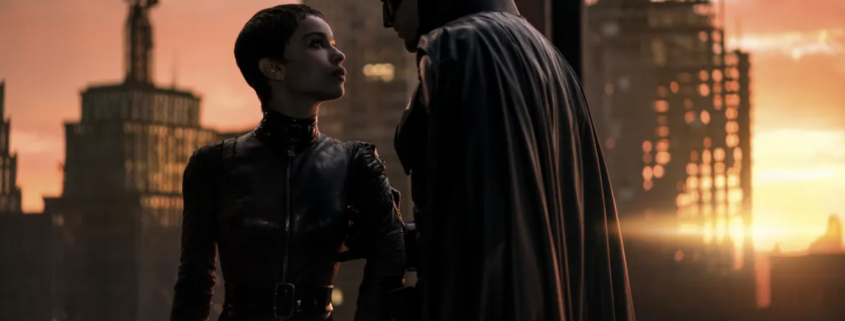Batman returns, with vengeance

With movie studios constantly churning out remakes, prequels and sequels, it seems hard to justify making yet another version of a classic story (we are looking at you “Cinderella” and Camila Cabello). But in “The Batman,” director Matt Reeves decides to take the extensively used story of Bruce Wayne in an entirely new direction.
What Reeves does in this new Batman is entirely novel from previous versions. He takes a deeper dive into the character that is Wayne. We learn about his past, his frailties and his struggles as we see him start to evolve into the more established character we’ve seen in previous films.
But this Batman film also lets audiences meet a new face. Reports state that Ben Affleck was exhausted by the filming of “Justice League” — or perhaps he’s spending more time with Jennifer Lopez. Nonetheless, he decided not to reprise the role of Batman, leaving the door open for a new actor to take his place. So, in walked Robert Pattinson a perhaps unexpected choice but one that proves to pay out as Pattinson takes on the role and makes it entirely his own.
In contrast to Affleck or Bale or Keaton, Pattinson is less muscle and more brain. In a roundtable interview with the cast and crew held over Zoom Feb. 17, Pattinson reflected on his experience playing a more sensible, conflicted version of Batman.
“It makes him more interesting to play in a lot of ways,” Pattinson said. “He’s just a man in an armored suit.”
Reeves chose to focus more on the detective side of Batman as we see him follow clues to unmask sadistic masked killer the Riddler (Paul Dano). Pattinson’s character is soon joined by an enigmatic and stray cat loving Selina Kyle (Zoë Kravitz). Together, they make a breathtaking dynamic duo, complementing each other and adding some cheek to their serious roles.
When asked about how Pattinson and Kravitz created good chemistry on screen, both actors said they believe it came down to each other’s work ethic and motivation.
“To have another performer you can really see is putting everything into it, it’s a reflective experience,” Pattinson said “It makes you want to work harder.”
The movie nostalgically recalls 70s’ neo-noir film in terms of style and cinematography, which Reeves admitted heavily influenced the style in which he chose to direct.
“It’s kind of like ‘All The President’s Men,’ and there’s a bit of ‘French Connection,’ there’s a bit of ‘Taxi Driver,’” Reeves said. “There are a lot of those ’70s movies that, to me, are the movies that really inspired me to want to make movies in the first place.”
The cinematography, in particular, is a sight to behold. Fans of “Dune” will enjoy cinematographer Greig Fraser’s work as he builds the city of Gotham into more than just a background setting, but into palpable energy that keeps us just as much on our toes as the plot.
Batman’s actions may respond to the Riddler, but their relationship is less straightforward, as are the motivations behind the antagonist’s actions. In “The Batman,” the Riddler first attempts to portray himself as an ally to Batman and demonstrate their ideological similarities, before taking things a bit too far.
“There’s more murkiness to the morality; it’s less just hero and villain and black and white,” Dano said. “It’s really complicated to have a villain who, some of his ideas are not wrong, maybe the execution is a little off.”
To help viewers understand the characters’ experience, composer Michael Giacchino’s pulsating and incredible score underlies the entire film and adds an extra element of urgency behind characters actions.
“The sound and the music are both totally critical,” Reeves said. “That was really the intention, to make sure you felt the visceral quality of the film, that the film felt subjective.”
Beyond the cinematic choices, the themes found in “The Batman” allude to ideas and issues occurring outside of Gotham, such as people’s perception of government and the ability for government to change.
While focused on the corruption in Gotham, it also serves as commentary on the state of our current government – how the people in charge use their power and if a transition of power to a younger generation is possible. The homogeneity of leaders present in Gotham’s government, our government and governments of Gothams past is eerily similar, which Reeves makes a point to expose in his film.
“The Batman” arrives at a time when trust in the government to function properly is perhaps at an all-time low, and Reeves explores how best to change that trust. Do we succumb to a never ending cycle of corruption? Should we waste our time prosecuting the wrongdoers of the past? Or do we make ourselves vulnerable by pursuing the possibility of change? Regardless, vengeance, indeed, does not change the past.
“The Batman” explores the conflict and relationship between the man and the mask, yet does so in an obscure, stunning and completely irresistible way. As John Turturro, who plays mob boss Carmine Falcone in the film, points out, “lots of people have something that they hide behind.” It could be a leather mask or simply a smile. The real question is who in the end becomes the real person, the masked version or the one behind it.
Rating: 4/5

